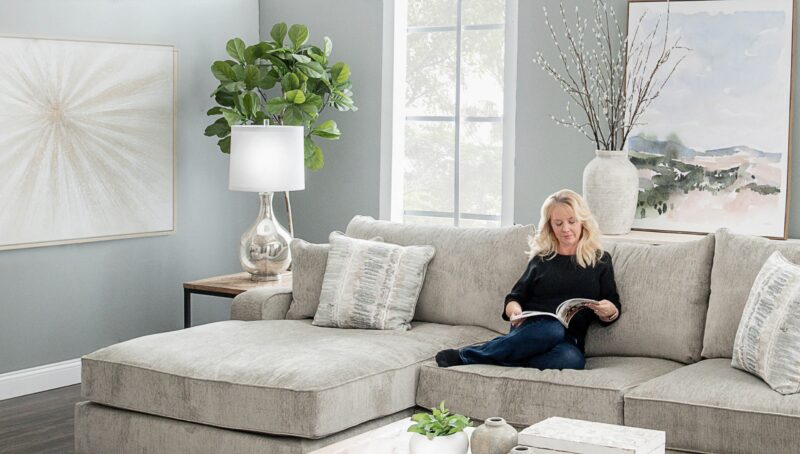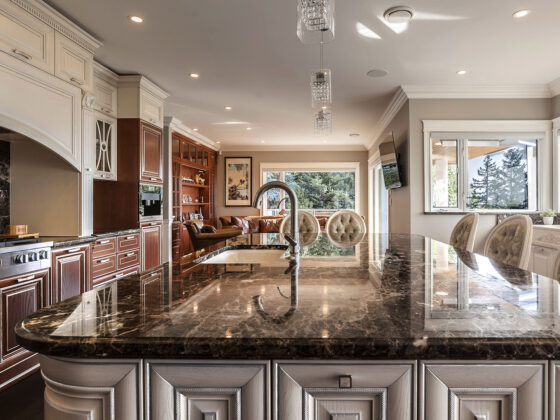When you’re living in a small space, decorating walls becomes more than a style decision—it’s a strategy. You want something that reflects your personality, adds visual interest, and maybe even solves a practical problem. That’s a lot to ask from a blank wall, but with a little intention, it’s entirely possible.
This guide isn’t about following trends or filling every inch with something quirky. It’s about choosing what feels right for your space—because even the smallest walls deserve thoughtful attention.
Choose Art That Anchors, Not Clutters
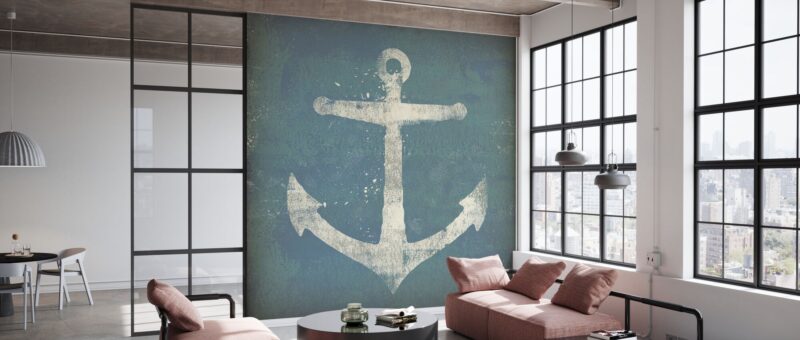
One oversized print can be more powerful than five little ones—especially when wall space is limited. It draws the eye, centers the room, and brings in color or emotion without visual noise.
Here’s a trick: if you’re nervous about committing to something permanent or pricey, go the custom poster route. Sites like Vograce offer poster printing services where you can upload your own photo, design, or favorite quote and get something professionally printed—without breaking your budget.
One large custom poster hung with purpose = instant statement.
Frame it, or don’t. Use poster strips if you’re renting. Just keep it clean and bold, and let it do the talking.
Install Floating Shelves with Layers in Mind
Floating shelves are the holy grail of small-space wall decor. Not only are they practical, but they let you layer decor in a way that’s easy to update without drilling five new holes every season.
Think of this setup:
- One small stack of neutral-toned books
- A low vase or candle
- A framed photo leaned casually against the wall
- Maybe a sprig of dried flowers in a tiny jar
That’s all you need. The goal is to create a visual rhythm, not a display case. You can even shift things seasonally—a pinecone in winter, a coral branch in summer—and it keeps the room feeling fresh without constant redecorating.
Let Fabric Do What Frames Can’t
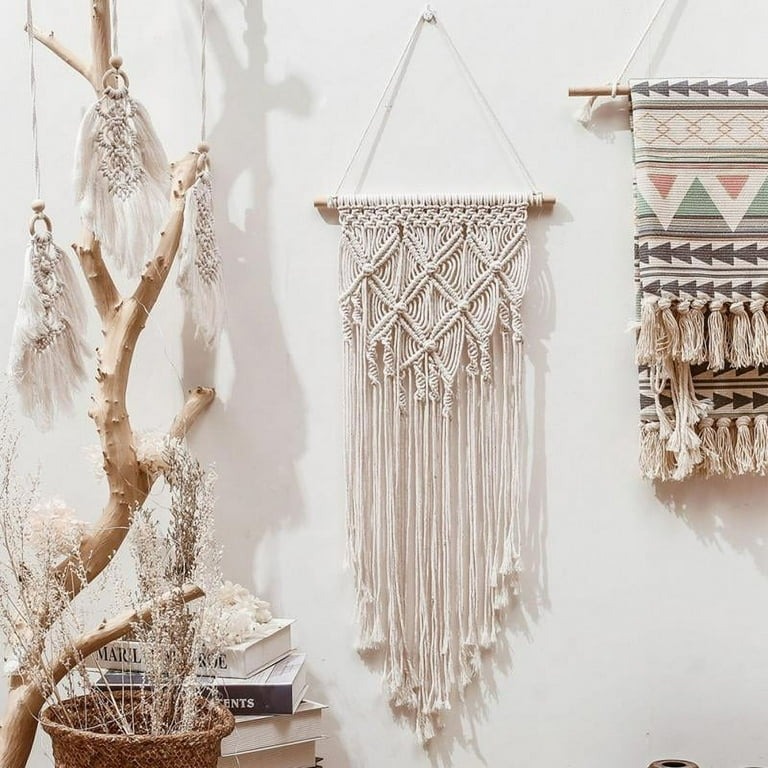
Not all wall decor needs to come in a frame. A thoughtfully chosen wall hanging, quilt, or woven tapestry can add texture and warmth that framed art just can’t replicate. Textiles soften a space—they break up harsh lines and add comfort without demanding attention.
This works beautifully in bedrooms or cozy nooks where you’re aiming for softness. You can hang a rug (yes, really), drape a fabric panel, or mount a vintage scarf inside a shadowbox. If you’re into crafting, macramé still has a place—just skip the overly boho versions and aim for something that complements your palette.
And don’t underestimate the power of fabric as a sound softener. If your space echoes, adding a soft wall element can make the room feel quieter and more grounded.
Think Practical with Pretty Hooks
I’m a big believer in functional decor. That’s where wall hooks come in. Not the basic plastic kind you hide behind coats—but thoughtfully chosen hooks that become the art.
In small spaces, you can:
- Mount staggered wooden hooks to hang hats, headphones, or crossbody bags
- Use brass hooks in a triangle layout to hold necklaces or scarves
- Try decorative knobs as hooks for lightweight totes or dog leashes
And if you don’t have much going on around them? That’s okay. Hooks in themselves, when placed well, are a design element—especially when they play with symmetry or unexpected patterns.
Use Mirrors, But Make It Intentional
We’ve all heard it: mirrors make a space feel bigger. That’s true—but only if you place them thoughtfully.
Here’s what works well:
- Place a round mirror across from a window to bounce natural light
- Use a long mirror in a narrow hallway to visually double the width
- Try a small mirror on a floating shelf, layered behind plants or books
- Opt for an arched shape to soften rigid room lines
What you don’t need is a massive, leaning mirror that eats up floor space you don’t have. In small rooms, wall-mounted is always the better choice.
And mirrors with minimal frames tend to blend better into tight corners or cramped entries.
Try a Curated (Not Chaotic) Gallery Wall
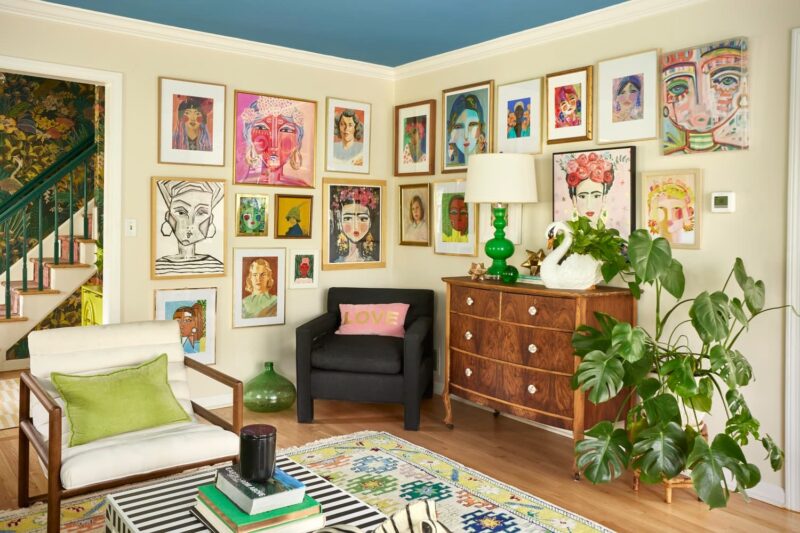
Now, I know gallery walls are everywhere—and they can feel intimidating. But in small spaces, you don’t have to go all out. In fact, a pared-down version can feel even more special.
Pick a narrow theme: black-and-white family photos, botanical sketches, or maybe line drawings in uniform frames. Stick to three or four pieces and space them neatly. The goal is to create rhythm, not chaos.
To avoid visual clutter, use matching frames or keep everything in the same color palette. And leave enough white space around your arrangement to let each piece breathe. A small-scale gallery wall, done right, feels curated, not crowded.
Paint Can Be Decor, Too
Sometimes, you don’t need to hang anything on the wall. A well-placed patch of color can work just as well.
Ideas to try (even if you’re renting—hello, removable wallpaper):
- A half-painted wall behind your bed to mimic a headboard
- A geometric block of color above a reading chair
- A vertical painted stripe to give the illusion of more height
- An arched shape to create a little nook vibe
These mini paint jobs act like frames without needing to hang a single nail. They’re clean, modern, and surprisingly effective.
Final Thoughts
Small walls aren’t a limitation. They’re an invitation to get specific—and specific is always more meaningful than general.
When you decorate intentionally, every piece feels earned. You’re not trying to impress anyone. You’re creating a space that reflects you, even if it’s just a narrow wall above your desk or the bit of space between two windows. That’s the beauty of working small: you learn to care more about what goes up, not just how much.
And if you’re ever in doubt? One great print, one floating shelf, and one bit of light-catching texture will take you further than a dozen mismatched frames ever could.
